February 26, 2025

How to prevent fabric from fraying?
When you're just starting to sew and you want your sewing to last, you need to prevent fabric from fraying. There are several ways of doing this to preserve fabric edges. By taking care to prevent your fabrics from fraying, you'll be able to progress in your hobby with better-quality finishes.
Stabilizing frayed fabric with pinking shears
Non-stretch warp and weft fabrics are easy to cut and sew without an overlock machine. However, these fabrics, especially thin ones, fray easily. You can cut with straight-edged scissors and sometimes even tear your fabric. Cutting with straight-bladed scissors will give you a neat result at first glance, but it won't necessarily be in the grainline. The fabric will not be stable and will fray.
Whether your fabric is stretchy or not, cutting it with pinking shears will stabilize it more durably than with straight-bladed scissors. However, it will still be necessary to overcast before sewing. Some fabrics can be simply cut with a notcher. However, they will fray with repeated washing and wear.
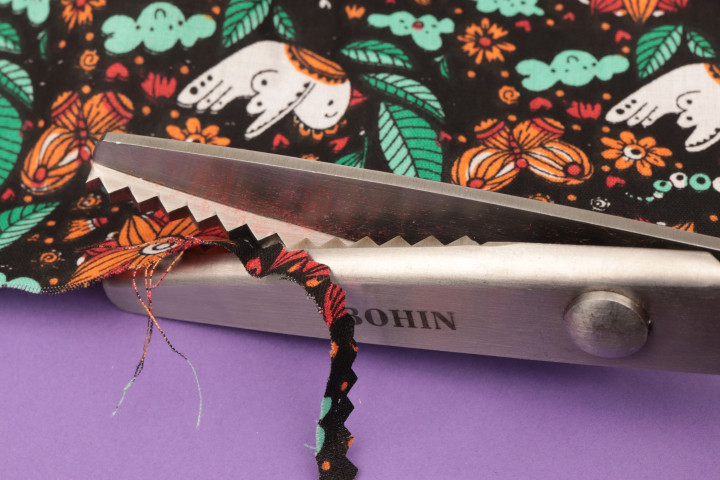

How to overcast a thin fabric without an overlock machine?
You don't need an overlocker, or even an overlock stitch on your sewing machine, to prevent fabric from fraying. With a simple beginner's sewing machine, you can create a zigzag stitch that easily replaces the overlock stitch. On moderately frayed fabric, a simple zig-zag stitch should be used. If your fabric is very frayed, you can use a multi-point zig-zag stitch, which is much more resistant.
Start by doing a test on a scrap of fabric. This will enable you to calibrate your stitch and ensure that it fits within your seam allowance. The zigzag stitch is made as close to the edge as possible. If your seam allowance is large enough, you can make your zigzag stitch a little further from the edge and then reduce the seam allowance. You can then use straight blades or serrated scissors to complement the anti-fraying effect of the zig-zag stitch.
Once you've cut your fabric, select a single-ply piece. You'll probably need to choose thinner needles than for assembly. In the case of the poplin in our demonstration, an 80 needle is used for assembly. For overcasting, a 70 needle is more appropriate.
To help you, you can trace your seam allowance. Make a zigzag as close as possible to the clean edge of your fabric. Reduce your seam allowance if necessary and you're ready to move on to assembly.
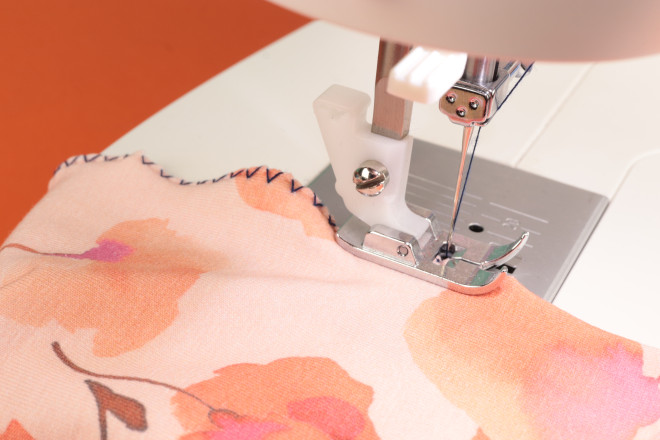
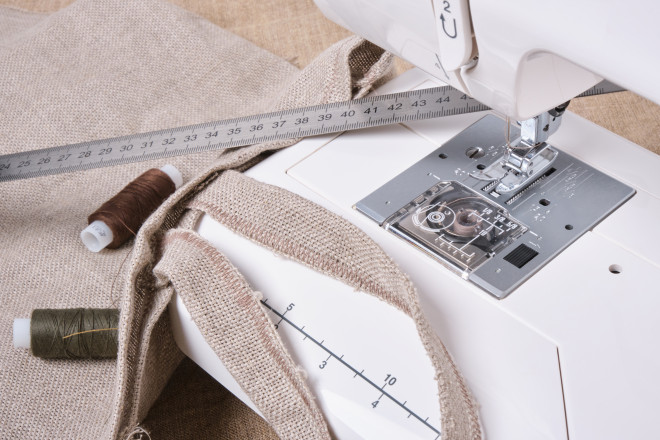
Preventing fabric fraying without a zig-zag stitch
Trimming the clean edges of frayed fabric
Ganser encloses the clean edge of a fabric. This prevents rubbing and fraying. This process is particularly useful for transparent or very thick fabrics. An unlined jacket will have an impeccable reverse side with gimped seams.
Prepare your pattern piece, trimming any threads that may protrude from the clean edges. Take a thin bias and open it. Align one edge of the bias with the clean edge of the fabric. Sew a straight stitch along the fold. Fold the bias over the clean edge. Stitch over the one you've already stitched. This is before assembly.
If you're using ribbon, you can run it through the bias tool to shape it for easier sewing. Or you can simply run an iron over it to fold it in half. The principle is the same as for bias binding. The advantage of gimping with ribbon is that you have one less thickness. Tying with ribbon is therefore a way of preventing thick fabrics from fraying.
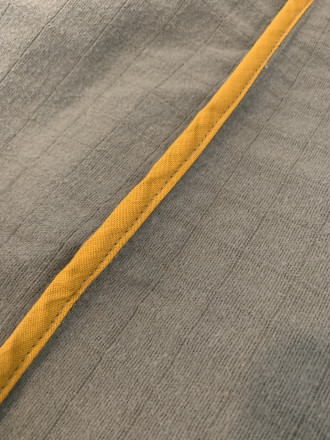
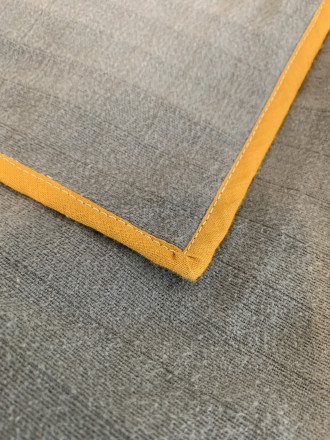
English seams, the anti-fraying solution for assembly
This technique encloses seams. It does, however, require larger seam allowances.
Start assembling wrong sides together. Pin your seam and go under the crowbar for a first straight-stitch assembly. You can shift the needle position to the right to further reduce the seam allowance for this first pass. Press your seam and fold both seam allowances to the same side. Fold your fabric right sides together. You can stabilize your seam by ironing. Pin your seam allowance. Make sure your seam allowance is not visible between your pins. Straight-stitch your seam. Iron the hem. Topstitch if you want to make your work reversible.
Your seams are clean. Your assembly is solid. And your sewing is reversible, even without a lining.
Simple finishing with anti-fray glue
Even simpler to prevent fabric fraying: glue the edges.
- Use straight-edged scissors to clean the edges of any protruding threads.
- Apply a few drops of BOHIN Anti-fray glue to the edges.
- Wait for it to dry
Your fabric's clean edge will no longer fray!




